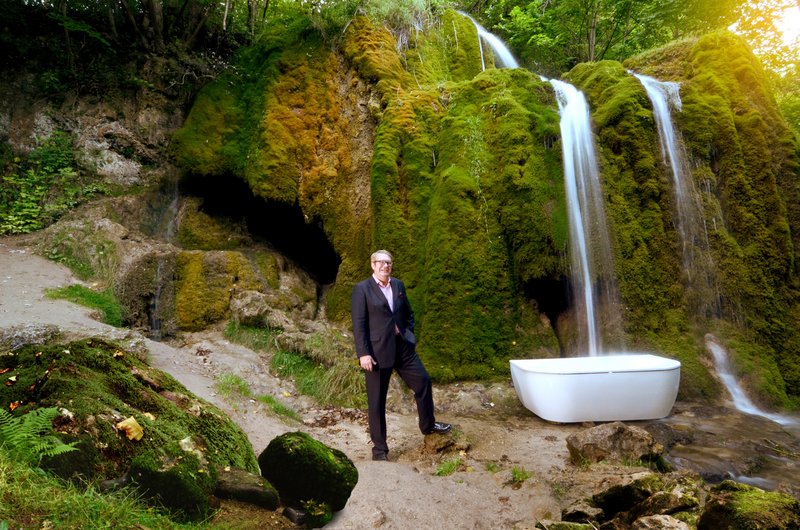That would be one way to get out of the price debate, of course. Is that your goal –to talk to customers less about prices and more about what creative bathroom planning can do for people?
Absolutely, that's precisely one of the approaches we're taking. And there's another very, very important point I'd like to make in this context. I think one of the challenges facing our industry is that new, aggressively priced competitors with different sales channels will cherry-pick individual products from the bathroom segment and offer them for sale. We say: that can't be what it's all about. It's not about individual products or accumulations of products, but about bathrooms that are planned as a whole, that meet individual needs and can provide a specific answer and genuine solution to those needs. That's a totally different way of approaching the topic of bathrooms, and the industry would be well advised to communicate this professional, integral approach in a visible way. Pop up my Bathroom isn't the only way we at the VDS (German Sanitary Industry Association) are doing that; we're involved with many other activities as well – such as the "Bathroom Day". All this goes to show that the bathroom belongs in the hands of professionals who manage the entire project, who have a mastery of the subject matter and build bathrooms that meet these standards.
What exactly do you mean by "needs"? Can you give us an example?
One need that's becoming increasingly important is independence and convenience in old age, and that in turn is closely linked with the theme of age-appropriate and health-oriented bathrooms. We all know the population is getting older, and we've picked up on that as a trend before. But I think the bathroom is actually far more important than many people currently realise: both as a mission and as a place not just for wellbeing but for health too. So we have to ask ourselves which health needs the bathroom can satisfy. Whether it's a case of water-based uses, lighting, acoustics, space for fitness routines or simply a case of warmth in the morning. I think we're still right at the outset. There are several products in the bathroom that have a health-promoting effect per se, like steam baths, saunas or water-based applications in general. Butgearing the bathroom even more strongly towards these needs without giving it a medical feel – that's a really fascinating task.
Doesn't that take us too far away from our industry's actual business?
I'm appealing to the competence and creativity of our plumbers. Just think about all the different things you can do in the bathroom! Quite apart from basic needs like going to the toilet, showering, washing or cleaning your teeth, you can easily come up with at least 50 other needs if you think about it: undressing or washing the children, putting make-up on, reading a book, making a phone call in peace or sharing experiences with the family are just a few examples of the needs a bathroom planner can factor into his design. And if he manages to communicate this added value during his consultation with the customer, he'll suddenly find himself talking not about prices but about a wide range of possibilities. And that's how we can open up a whole new world to people with their new bathroom.
How can that kind of consulting approach be expanded on in dialogue with the customer?
Every consultant has a model bathroom in mind when he sizes up the customer he's talking to. But it's actually a question of being prepared to cater to individual needs. That's how unusual solutions emerge. Pop up my Bathroom also tries to encourage consumers to articulate their needs. In the current Pop up my Bathroom trend report, we haven't just described the three trends Busy Bathroom, Bathroom Bubble and Bathroom (R)Evolution in detail and visualised them with a wealth of photos, we've also pointed out a lot of needs that not only provide ideas for an innovative and creative bathroom design but can play a role in the consultation with the customer as well. The planner can use these needs to illustrate all the different possibilities a bathroom can open up. In my opinion, it really is a fantastic tool with a lot of added value.
Part I of the interview you can read here.
Part III of the interview you can read here.


